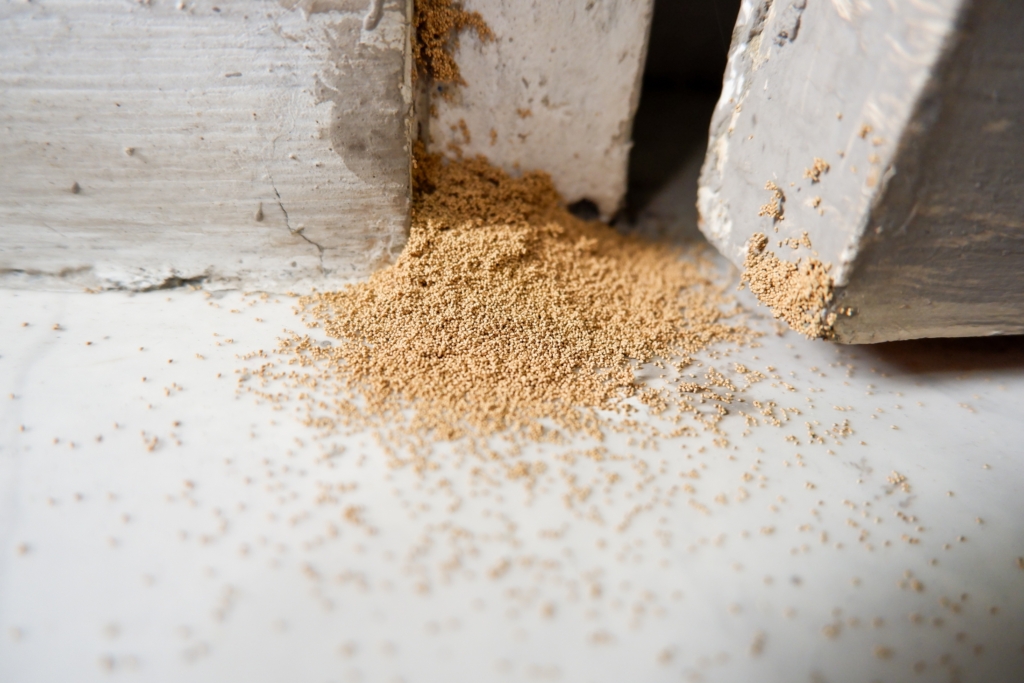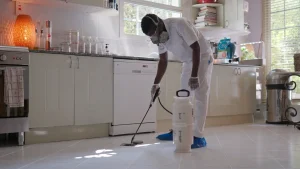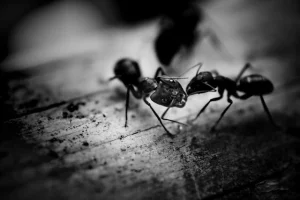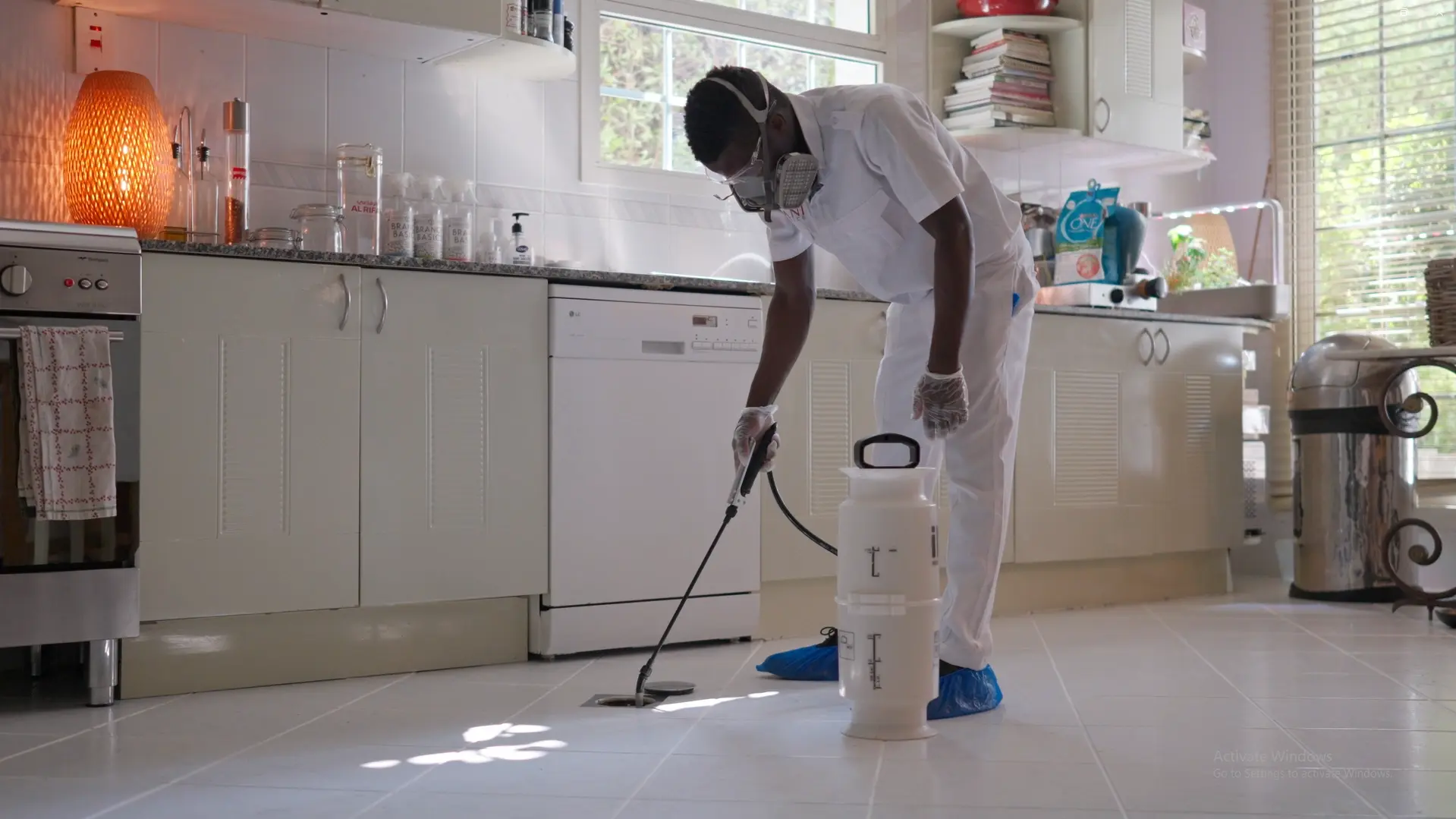
Termites are notorious for causing extensive damage to homes, often going undetected until it’s too late. Early detection of termite infestations is crucial to minimize their impact on your property and prevent costly repairs. In this blog post, we will discuss some steps you can take to identify termite infestations in your home and why it’s important to seek professional help if you suspect a problem.
Step 1: Look for Visible Signs of Termites
Termites, those silent yet destructive invaders, have a tendency to leave behind a trail of subtle clues that can serve as early warnings of their presence. To safeguard your property, it’s essential to be vigilant for the following key indicators:
- Mud tubes: These pencil-sized tunnels are a hallmark of termite activity. Erected by termites to shield themselves from threats like predators and desiccation, these tubes can often be spotted along your home’s foundation, walls, or crawl spaces.
- 2. Frass (termite droppings): Drywood termites, in particular, generate small, pellet-like droppings known as frass. Keep an eye out for accumulations of frass, which might be found in proximity to wooden structures or even on window sills.
- 3. Damaged wood: Termites have an insatiable appetite for wood, and their feeding behavior often results in a distinctive honeycomb-like pattern within the timber. A simple test involves tapping on wooden surfaces with a screwdriver – if the sound produced is hollow, it could signify termite-induced damage.
- 4. Discarded wings: Reproductive termites, also known as swarmers, shed their wings following their successful pairing. These abandoned wings can accumulate near potential entry points, such as windows or doors, providing a visible clue of termite presence.
Being attuned to these subtleties can prove instrumental in detecting termite infestations at an early stage, affording you the opportunity to take swift and proactive measures to protect your property from these relentless destroyers. Remember, the mastery of termite identification and prevention lies in the attentiveness of the homeowner.
Step 2: Monitor for Swarming Activity
The emergence of swarming termites serves as a potent and unmistakable harbinger of an active termite colony in close proximity. These impressive swarms tend to materialize during periods of warm, humid weather, often making their appearance in the transitional seasons of spring or fall. Should your vigilant gaze chance upon the sight of swarming termites or the delicate remnants of their discarded wings strewn around your abode, it is paramount to delve deeper into the matter. Swift action is advised, and enlisting the expertise of a professional pest control specialist becomes not just prudent, but imperative. By promptly embarking on a comprehensive investigation and seeking guidance from seasoned experts, you can effectively curb the potential damage that these determined invaders might inflict upon your cherished property. Remember, the presence of swarming termites should be viewed as an urgent call to action, a signal to safeguard your home against the relentless onslaught of these industrious and destructive insects.
Step 3: Inspect Your Home Regularly
Regular inspections of your home can help detect termite infestations early, preventing extensive damage. Pay attention to the following areas:
- Foundation: Examine your home’s foundation for mud tubes, cracks, or other openings that termites could use to enter.
- Wooden structures: Inspect wooden beams, joists, and flooring for signs of termite damage, such as hollow-sounding wood or visible tunnels.
- Crawl spaces and attics: These areas provide ideal conditions for termites to thrive. Check for mud tubes, damaged wood, or frass in these spaces.
Step 4: Seek Professional Help
If you suspect a termite infestation, it’s crucial to seek help from a professional pest control company. Experts can accurately identify the extent of the infestation, recommend an appropriate course of action, and monitor the effectiveness of treatments to prevent future infestations.
Conclusion
Detecting termite infestations early is essential to protect your home and avoid costly repairs in the long run. By being consistently vigilant about inspecting your property and promptly seeking professional assistance when needed, you can effectively safeguard your home from the potential havoc these destructive pests can wreak. Remember, prevention is unequivocally better than cure, so consider investing in regular inspections and proactive maintenance to ensure your home remains a fortress against termite invasions. Your proactive efforts will not only provide you with peace of mind but also contribute to the long-lasting health and stability of your cherished property.












